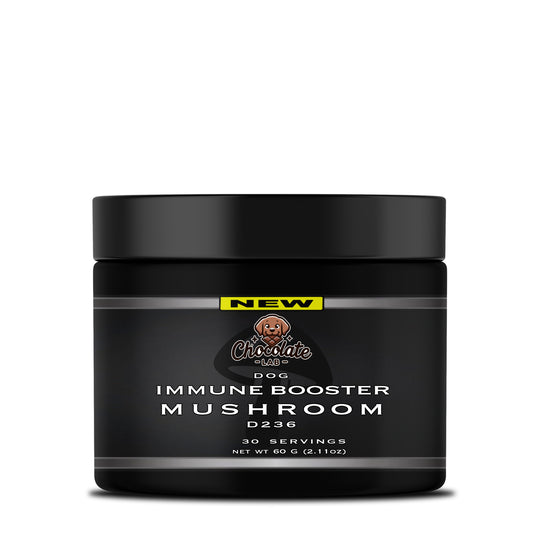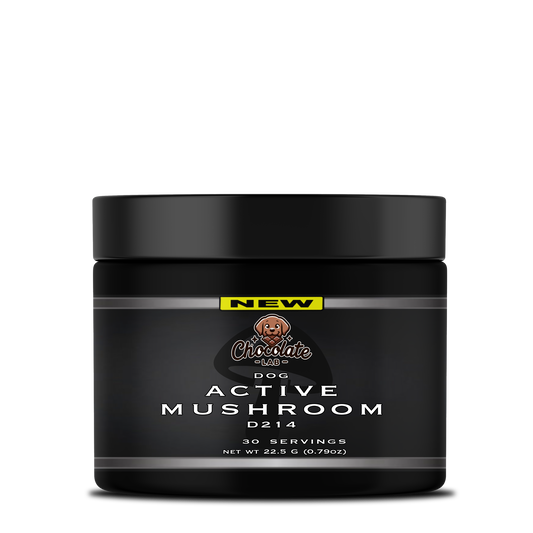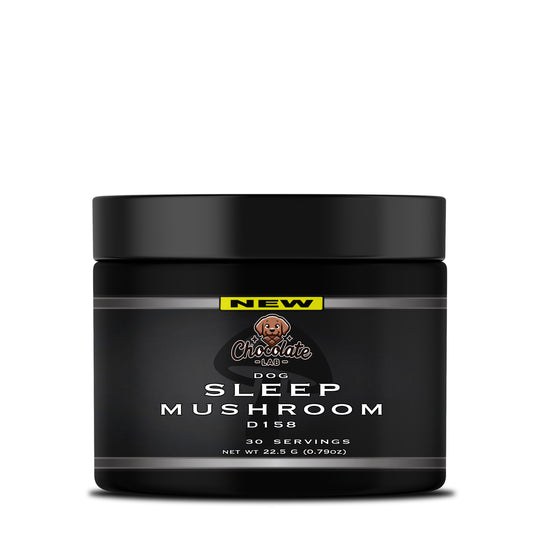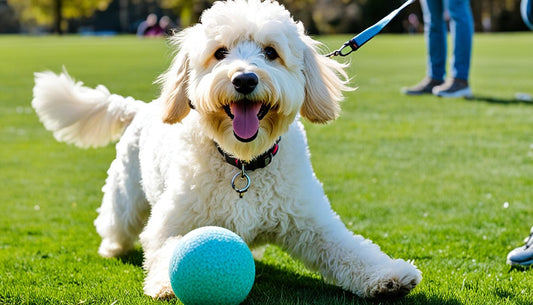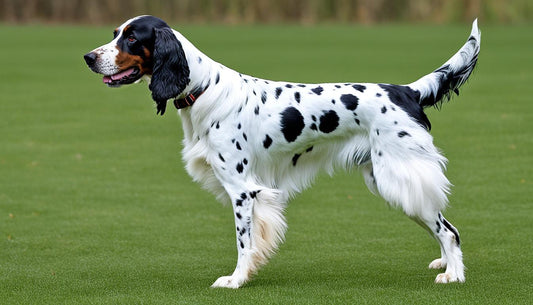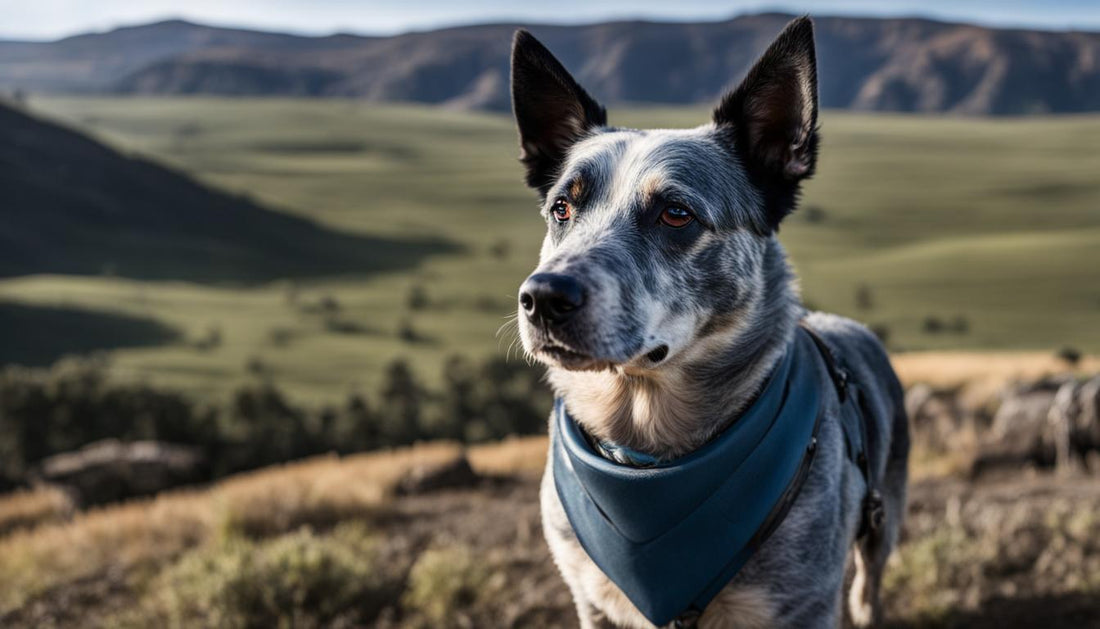
Blue Heeler - Dog Breed Information, Puppies & Expert Tips
When it comes to blue heeler care, many might ask if these energetic dogs can fit into the family dynamic as well-behaved members. Known for their boundless energy and sharp intelligence, blue heelers, or Australian Cattle Dogs, require dedicated blue heeler training and a specific approach in order to thrive. Are you up for the challenge of nurturing one of these robust companions into a well-mannered family member? Dive into our Blue Heeler Care Guide for crucial insights that pave the way for a lifetime of loyalty, activity, and tail-wagging happiness from your four-legged friend.
Educating yourself on blue heeler tips, enriched with the breed's distinct nature, is essential to crafting a harmonious relationship. This comprehensive care guide is your key to unlocking the potential of your spirited partner as we walk through nutrition, exercise, healthcare, and more. Enthusiasts praise the blue heeler for their stamina and devotion, but it takes thoughtful stewardship to channel their vitality into positive behaviors.
Key Takeaways
- Unveil the true potential of a well-behaved blue heeler with the right training approach.
- Receive expert blue heeler tips for integrating this energetic breed into your life.
- Learn how dedicated blue heeler care shapes a loyal and loving companion.
- Discover training tactics tailored to the unique intelligence of blue heelers.
- Understand the importance of routine in fostering a blue heeler's well-being.
Understanding Your Blue Heeler's Unique Traits

Gaining insight into the distinctive characteristics of the Australian cattle dog can significantly impact how effectively you engage with these dynamic animals. At the heart of their remarkable temperament and capabilities lies a storied history coupled with distinctive physical and mental attributes.
The Heritage of the Australian Cattle Dog
Bred from a mix of wild dingoes and herding dogs, Australian cattle dogs are hardwired to exhibit resilience and a strong work ethic. Originating in the harsh Australian outback, they were developed to endure the demanding conditions of the land and to drive cattle over long distances.
Characteristics of Intelligent Dog Breeds
As a notably intelligent dog breed, blue heelers flourish when mentally stimulated. Their cleverness is evident through their quick learning, problem-solving skills, and remarkable adaptability to new situations.
Physical Attributes of Medium-Sized Dog Breeds
The robust build of the medium-sized blue heeler supports their agility and endurance. With a muscular stature, they possess the physical prowess necessary for a herding dog breed, designed to manage and protect livestock.
| Characteristic | Description | Benefit |
|---|---|---|
| Intelligence | Highly trainable, sharp-minded | Excels in obedience and task completion |
| Physical Build | Compact, muscular body | Suitable for active roles and sustained physical activity |
| Stamina | Long-lasting endurance | Capable of extensive work periods without tiring |
| Temperament | Loyal, protective, energetic | Forms strong bonds with handlers; excellent for guarding and companionship |
Understanding these traits is paramount in providing care that aligns with your Australian cattle dog's genetic heritage and instinctual behavior. These dogs are not just pets; they are intelligent, medium-sized companions with a herding dog breed lineage that influences their every action and response.
Essentials of Blue Heeler Care

Delving into the essentials of blue heeler care, owners must recognize the deep-rooted traits of this loyal dog breed. Blue heeler puppies and dogs require a blend of companionship, physical activity, and mental challenges to lead a balanced life. Whether you are a novice pet parent or a seasoned dog enthusiast, understanding your blue heeler’s needs is the cornerstone of nurturing a healthy and joyful companion.
A blue heeler's loyalty is not just an attribute; it frames their entire world view. They need to be part of family activities and thrive in environments where interactive play and bonding are routine. Their keen minds mean that regular mental stimulation is as necessary as their daily physical exercise. Here are the fundamental aspects you must incorporate into your routine to keep your blue heeler dog engaged, fit, and happy:
- Companionship: Integrating your pet into the family unit, offering affection and involvement in day-to-day activities.
- Exercise: Sufficient and appropriate physical workouts to cater to their high energy levels and build endurance.
- Mental Stimulation: Activities and training that challenge their intellect and satisfy their work-driven nature.
- Health Maintenance: Regular check-ups and vaccinations to prevent common health issues and ensure overall well-being.
- Nutrition: A balanced diet that supports their active lifestyle, keeping them energetic and agile.
Blue heelers, known for their intelligence and energy, crave a purpose and enjoy tasks that stimulate both their mind and body. The key to a fulfilling life for your blue heeler lies within regular engagement and a deep understanding of their loyal nature.
Creating a care routine that mirrors the natural instincts and attributes of blue heeler dogs lays the groundwork for a solid, mutual bond. A loyal dog breed by nature, the blue heeler will return your care and attention tenfold, developing into a devoted and steadfast family member. Tending to blue heeler puppies with the right care approach means you'll be rewarded with a companion whose vigor and affection know no bounds.
| Aspect of Care | Importance | Recommended Actions |
|---|---|---|
| Regular Exercise | Crucial for maintaining physical health and preventing behavior issues | Daily walks, runs, and playtime in secure, open spaces |
| Mental Enrichment | Fosters cognitive function and satisfaction | Interactive games, obedience training, and task-oriented play |
| Social Interaction | Builds confidence and a well-rounded temperament | Introducing new people, pets, and environments in a positive manner |
| Preventive Health Care | Proactive approach to avoid health complications | Consistent veterinary visits, vaccinations, and parasite prevention |
| Balanced Diet | Supports overall vitality and energy for daily activities | Quality food with the right nutrients in adequate proportions |
Embark on this journey with commitment and affection, and you can look forward to a long and fulfilling relationship with your blue heeler dog. By addressing the core needs of the breed, you not only cater to their well-being but also strengthen the unbreakable bond that makes them such a loved and loyal dog breed.
A Complete Nutrition Plan for Blue Heelers

Optimal nutrition is the foundation for the health of any dog, particularly for an active working dog breed like the blue heeler. Beyond their striking appearance and intense gaze, blue heelers possess an energy and vitality that demand a targeted dietary approach. Recognizing the specific dietary needs at each stage of your blue heeler's life will promote their vigor and longevity. It's vital that owners develop a complete nutrition plan tailored to the unique needs of this herding dog breed.
Feeding Schedules for Blue Heeler Puppies
Nurturing a blue heeler puppy requires an understanding of their rapid growth needs. Puppies have developing bodies that need more frequent feedings of specially formulated food that supports their growth and energy levels. Balanced nutrition is crucial in these formative months to set a foundation for healthy adulthood.
| Age of Puppy | Feeding Frequency | Type of Food | Portion Size |
|---|---|---|---|
| 0-3 months | 4 meals a day | Puppy-specific formula | Small, as directed by vet or food guide |
| 3-6 months | 3 meals a day | Puppy-specific formula | Gradually increasing |
| 6-12 months | 2 meals a day | Transition to adult formula | As per growing size and energy demands |
Dietary Needs of a Working Dog Breed
The vigorous lifestyle of blue heelers demands a diet rich in proteins, fats, and carbohydrates that fuel their endurance and muscle health. A diet lacking in essential nutrients may lead to a decline in this working dog breed's capacity to perform the daily activities they are so passionate about. Carbohydrates for energy, fats for coat health, and proteins for muscle repair are dietary staples for any active dog.
| Nutrient | Benefit | Recommended Sources |
|---|---|---|
| Protein | Supports muscle growth and repair | Meat, poultry, fish, eggs |
| Fats | Provides energy and supports skin and coat health | Oils, fats in meats, omega fatty acids |
| Carbohydrates | Quick energy source | Whole grains, vegetables |
Nutritional Supplements for Herding Dog Breeds
While a complete and balanced diet is ideal, there are times when supplements can address specific health needs or deficiencies in herding dog breeds. For instance, joint supplements may support those working tirelessly on varied terrains, and omega fatty acid supplements can ensure a gleaming coat and healthy skin. Consult with a veterinarian regarding which, if any, supplements would benefit your blue heeler's individual health profile.
Remember, each blue heeler is unique, and what works for one may not be the ideal choice for another. A personalized approach to nutrition, taking into account individual health and activity level, ensures your blue heeler thrives.
Effective Training Techniques for Blue Heelers

Training a blue heeler, often regarded as an incredibly loyal dog breed, necessitates a consistent and skilled approach. Honing your blue heeler's natural traits through well-executed training techniques can enhance your bond and lead to a well-adjusted, happy dog. By understanding the nuances of this intelligent dog breed, you'll be able to apply training methods that tap into their keen intellect and innate abilities as a working dog breed.
Establishing Leadership with a Loyal Dog Breed
Blue heelers are inclined to respect an assertive leader who provides clear direction and structure. Building this leadership role requires a calm, confident approach. It is essential to establish rules and maintain them without deviation, ensuring your blue heeler understands and follows the established hierarchy. Assertiveness should never be confused with harshness; a firm, yet gentle leadership will inspire trust and respect from this loyal dog breed.
Obedience Training for Intelligent Dog Breeds
Smart and swift learners like blue heelers excel with obedience training that challenges them mentally. Employing blue heeler training techniques that focus on positive reinforcement will encourage these astute canines to learn quickly and eagerly. Regular training sessions, engaging exercises, and a variety of commands will keep them interested and attentive. Remember, their intelligence is a gift that, when well-directed, sets the stage for an array of impressive behaviors.
Advanced Training Strategies for Working Dogs
As a working dog breed, blue heelers enjoy taking on new challenges and responsibilities. Incorporating advanced training strategies, such as agility courses or herding tasks, satisfies their need for physical and intellectual stimulation. Diversifying their routines with new tricks or roles in the household can also positively direct their boundless energy.
Training your blue heeler should be a dynamic and enriching experience for both of you. Remember to be patient, consistent, and receptive to your dog's unique personality traits. By incorporating the right balance of discipline, affection, and recognition of their capabilities, you'll develop a deep and rewarding companionship with your blue heeler.
| Training Aspect | Technique | Benefit |
|---|---|---|
| Leadership | Consistency and calm authority | Builds respect and understanding |
| Obedience | Positive reinforcement | Encourages eagerness to learn and comply |
| Advanced Skills | Tasks that challenge both mind and body | Channels energy into constructive activities |
The key to effective blue heeler training techniques is understanding that at their core, they are a highly intelligent dog breed that thrives on mental stimulation and physical engagement. Through clear leadership, structured obedience training, and advanced training tailored to their working dog instincts, your blue heeler will not only respect and trust you but will also stand out as a multifaceted and highly skilled companion.
Socialization and Your Blue Heeler

The key to a well-balanced and sociable blue heeler lies in early and ongoing blue heeler socialization. This vital aspect of their development ensures that these naturally loyal dog breeds grow into companions who are versatile and adaptable. Socialization helps mitigate the protective instincts that can lead to over-guarding behaviors and encourages positive interactions with a variety of environments, people, and other animals.
Beginning with blue heeler puppies, socialization starts from the moment they start interacting with the world. Below are foundational steps for introducing young blue heelers to a range of stimuli that will form the cornerstones of their social development:
- Introduce blue heeler puppies to different people to encourage comfort with strangers.
- Expose them to various sounds and environments to reduce fearfulness towards the unfamiliar.
- Allow them to encounter other healthy, vaccinated animals to broaden their social circle.
- Engage them in different types of play to teach bite inhibition and control over their herding instincts.
For adult blue heelers, the socialization process continues by introducing new experiences that reinforce their adaptability and reduce the chances of reactive behavior:
- Visiting dog parks under controlled circumstances can foster positive canine interactions.
- Attending obedience classes provides structured environments for them to learn and interact with others.
- Arranging playdates with familiar dogs can strengthen their social skills and provide outlets for their energy.
Every experience in a blue heeler's life is an opportunity for social learning, enriching their understanding of the world and reinforcing their loyal dog breed characteristics through positive reinforcement.
The long-term goal of socialization is to help your blue heeler become a well-rounded, confident member of your family and society. It reduces the likelihood of behavioral problems and prepares them to handle new situations with composure. With consistent exposure to a variety of scenarios, your blue heeler will be equipped to navigate the world with enthusiasm and trust.
The Importance of Regular Exercise

A robust regimen of regular exercise for blue heeler dogs not only maintains their physical health but also keeps their intelligent mind engaged. Blue heelers, part of the energetic breeds group and deeply rooted in their herding dog breed heritage, need a structured exercise plan that complements both their physical vigor and mental sharpness. In crafting an exercise routine, it's important to incorporate activities that satisfy their inherent drive to work and their need for mental stimulation.
Crafting an Exercise Regimen for Energetic Breeds
The key to a successful exercise plan for a blue heeler is variety. These dogs are high-spirited and flourish on engaging activities that challenge them physically and mentally. An exercise regimen that includes daily walks, fetching games, agility training, and interactive play sessions can help harness their boundless energy and prevent potential behavior issues that arise from inactivity. It's critical to balance the intensity and duration of their workouts to match their age and health status.
| Activity | Physical Benefits | Mental Benefits |
|---|---|---|
| Agility Training | Improves coordination and fitness levels. | Engages their problem-solving skills and focus. |
| Long Distance Running | Builds endurance and helps maintain a healthy weight. | Provides a sense of purpose and accomplishment. |
| Fetch and Frisbee | Increases their reaction time and agility. | Stimulates concentration and the joy of play. |
| Hiking | Strengthens muscles and builds stamina. | Offers new scents and environments to explore, enhancing sensory experiences. |
Outdoor Activities for Herding Dogs
Herding dogs like the blue heeler have an instinctive desire to move and herd. Engaging them in outdoor activities that mimic their natural behaviors can be especially fulfilling. Herding trials, where they can maneuver obstacles and direct other animals, not only give them a physical outlet but also deeply satisfy their herding instincts. Outdoor play in secure, open spaces provides them with the freedom to run, which is essential for such an active breed. Moreover, interactive games that replicate herding patterns encourage them to think and react as they would in a pastoral setting.
Regular engagement in dynamic outdoor activities helps ensure blue heelers are healthy, happy, and well-adjusted pets, fulfilling their potential as both energetic breeds and herding dog breed members.
Healthcare Tips for a Blue Heeler

Providing top-notch blue heeler healthcare is a fundamental duty of pet ownership, ensuring these high-spirited canines stay fit and ready for adventure. Familiarity with the common Australian cattle dog health issues and investing in preventative measures can greatly enhance the quality and longevity of your blue heeler's life. Let's explore how preventive care and regular blue heeler check-ups can safeguard your furry friend's wellbeing.
Common Health Issues in Australian Cattle Dogs
Australian Cattle Dogs are robust by nature, but they can be predisposed to certain health conditions. Recognizing the signs early on can make a significant difference in management and treatment. Here's what blue heeler owners should look out for:
- Hip dysplasia, a genetic condition where the thigh bone doesn't fit snugly into the hip joint.
- Progressive Retinal Atrophy (PRA), an eye disorder that can potentially lead to blindness.
- Deafness, sometimes associated with their distinctive coat colors.
- Hereditary demyelination, a rarer nerve disease.
Being aware of these common ailments is the first step in proactive blue heeler healthcare.
Preventive Care and Regular Check-ups
Investing in your pet's health greatly prevents the onset or exacerbation of hybrids' typical health conditions. Scheduling regular blue heeler check-ups with your veterinarian ensures that any issue can be detected early and managed effectively. Preventive care includes:
- Vaccinations to protect against infectious diseases.
- Routine dental check-ups to maintain oral hygiene and prevent disease.
- Regular screenings for hip dysplasia and other genetic conditions.
- Control and prevention of parasites that can affect your dog's health.
Regular, comprehensive veterinary examinations are crucial to maintaining the health and vitality of your beloved companion.
| Health Issue | Early Signs | Preventative Actions |
|---|---|---|
| Hip Dysplasia | Limping, difficulty in rising | Weight management, joint supplements |
| Progressive Retinal Atrophy | Diminished night vision, dilated pupils | Genetic screening, regular eye exams |
| Deafness | Lack of response to auditory cues | Breeder screening, BAER testing |
| Hereditary Demyelination | Weakness, incoordination | Neurological assessments, supportive care |
By staying vigilant and responsive to your blue heeler's health needs, you give them the best chance of a long, hearty life by your side. Regular veterinary care is not just an investment in your dog's health—it's an investment in your future together.
Grooming and Maintenance

Keeping your blue heeler looking and feeling great is an essential part of their care. Regular grooming not only maintains their striking appearance but also promotes good health. The two keystones in the grooming routine of any blue heeler are coat care and personal hygiene, which includes nail clipping and dental care. Here we'll delve into the most effective methods to keep your blue heeler in top shape.
Coat Care for Blue Heelers
Blue heelers are known for their beautiful, weather-resistant coats that require regular maintenance. Their double coat, with a short and dense undercoat and a longer outer coat, sheds year-round and even more so during seasonal changes. To manage shedding and keep their coat healthy, regular brushing is recommended. Utilizing a suitable slicker brush or a deshedding tool can make a significant difference in managing the loose hair and maintaining the coat's luster.
| Coat Care Activity | Frequency | Tools | Tips |
|---|---|---|---|
| Brushing | 2-3 times a week | Slicker brush, deshedding tool | Gentle strokes to remove dead hair and distribute natural oils |
| Bathing | Every 2-3 months or as needed | Mild dog shampoo | Use lukewarm water and thoroughly rinse out shampoo |
| Dry Shampoo Application | As needed between baths | Dog-specific dry shampoo | Great for quick refreshment and odor control |
It's important to bathe your blue heeler sparingly to avoid stripping the natural oils from their coat which can lead to dry skin. Opting for a high-quality dog shampoo will help maintain their coat's health and shine.
Nail Clipping and Dental Hygiene Tips
Clipping your blue heeler's nails is another critical component of their grooming. Allowing nails to grow too long can lead to pain and structural issues, which can affect their gait and posture. Similarly, maintaining dental hygiene is non-negotiable in ensuring your blue heeler's overall health. Dental diseases can lead to serious systemic issues, so regular teeth cleaning is a must.
| Grooming Task | Benefits | Frequency | Tools |
|---|---|---|---|
| Nail Clipping | Prevents nail splitting and joint pain | Every 3-4 weeks | Quality nail clippers or grinder |
| Teeth Brushing | Reduces risk of gum disease and tooth decay | Daily | Dog toothbrush and enzymatic toothpaste |
| Professional Dental Cleaning | Deep cleans and prevents major dental issues | Annually or as recommended by a vet | Performed by a veterinarian |
To make nail clipping a stress-free experience, accustom your blue heeler to having their paws handled from a young age. For dental care, using a toothbrush designed for dogs and vet-approved toothpaste are the tools of the trade. Starting these routines early in your blue heeler's life can encourage them to accept these tasks more readily as they grow.
By regularly attending to your blue heeler's grooming needs, you'll not only be maintaining their striking appearance but also enhancing their quality of life. Embrace the bonding opportunity that grooming sessions present, and enjoy the beauty of your blue heeler's well-kept appearance.
Behavioral Traits and How to Address Them

Every blue heeler owner quickly comes to appreciate the unique set of behavioral traits that make this loyal dog breed so compelling and, at times, challenging. Understanding and addressing these traits, including their herding instincts and susceptibility to separation anxiety, are crucial in fostering a well-adjusted and contented canine companion.
Dealing with Herding Instincts
One of the most salient blue heeler behavioral traits stems from their strong herding instincts. This ingrained behavior can manifest as nipping at heels or attempting to corral humans and pets. To positively channel these instincts, consider the following strategies:
- Engage your blue heeler in herding-oriented games that imitate the gathering and moving of livestock.
- Enroll in dog sports like agility or flyball where they can utilize their quick decision-making and physical agility.
- Regular training sessions that include activities requiring discipline and focus can give them a sense of purpose.
These activities not only provide a constructive outlet for your blue heeler's energy but also reinforce your bond through teamwork and shared experiences.
Managing Separation Anxiety in Loyal Dog Breeds
As a notably loyal dog breed, blue heelers can experience separation anxiety when away from their owners. This attachment reflects their commitment to their human family, but it can also pose challenges. To help manage this anxiety:
- Create a safe, comfortable space for your blue heeler that includes familiar scents and items when you're not home.
- Use of calming aids such as pheromone diffusers or anxiety-reducing toys.
- Gradually acclimate your dog to your absence by starting with short durations and gradually increasing the time.
- Consider daycare or a dog sitter to provide companionship and mental stimulation during longer absences.
Mitigating separation anxiety is essential to your blue heeler's emotional well-being, assuring them that solitude is temporary and safe.
By addressing these intrinsic behavioral aspects of blue heelers, you can leverage their innate characteristics into positive outcomes. With patience and consistent management, both the herding instincts and separation anxiety commonly seen in blue heelers can be navigated successfully, leading to a contented life for you and your dog.
Understanding your blue heeler's behavioral traits is key to resolving challenges and cultivating a harmonious relationship with this active and loyal dog breed.
Choosing the Right Blue Heeler for You

Before bringing a blue heeler into your life, it’s important to make an informed decision regarding which companion best suits your lifestyle. A blue heeler can be a wonderful addition to your home if careful consideration is given to size, temperament, and source of adoption or purchase.
Where to Find Blue Heeler for Sale or Adoption
Those in search of a blue heeler for sale have several options. It's essential to connect with reputable breeders who prioritize the health and well-being of their animals. Such breeders will have comprehensive knowledge about the breed and will be able to provide health clearances for their puppies. Alternatively, blue heelers in need of a new home can often be found through rescue organizations and shelters. Adoption can be a fulfilling option, giving a blue heeler a second chance at life within a loving family.
Considering Miniature Blue Heeler and Standard Sizes
When selecting a blue heeler, prospective owners must choose between the standard and the miniature blue heeler, commonly referred to as a mini blue heeler. A miniature blue heeler can be an ideal pet for smaller living spaces, while the standard size may be better suited for those looking for a more physically robust companion. No matter the size, blue heelers are energetic and need an ample amount of daily exercise and mental stimulation.
| Size Variation | Physical Characteristics | Living Space Compatibility | Activity Level |
|---|---|---|---|
| Standard Blue Heeler | Larger stature, more physically demanding tasks | Ideal for larger homes with outdoor access | High, requires significant exercise and engagement |
| Miniature Blue Heeler | Smaller size, easier to manage in tight spaces | Suitable for apartment living | High, though may tire more quickly than standard |
Remember, the decision to invest in a blue heeler goes beyond the initial blue heeler price; it requires a commitment to meet their physical and emotional needs throughout their lifetime.
Understanding the difference between a mini blue heeler and a standard blue heeler is crucial to ensure that you select a dog that aligns with your expectations and environment. Whether you find a loyal companion through adoption or a conscientious breeder, your blue heeler will be a dynamic member of your family for years to come.
Blue Heeler

Welcome to the world of Blue Heelers, where the joy of welcoming newborn blue heeler puppies into your home is just the beginning of a rewarding journey. With their piercing eyes and boundless energy, blue heeler puppies quickly become beloved members of the family, but it’s important to understand the various aspects of ownership. In this section, we’ll explore the early life stages of blue heeler puppies, how the blue heeler price can vary, and share some insights into what new owners should consider.
The arrival of newborn blue heeler puppies is an event that requires preparation and knowledge about their needs. These vivacious puppies need a considerable amount of socialization, training, and healthcare right from the start. Preparing to bring a blue heeler puppy into your environment involves understanding their space requirements, exercise needs, and the companionship that this breed thrives on. When raising blue heeler puppies, investing time in training and bonding activities will foster positive behaviors and nurture a strong, lifelong friendship.
When considering the acquisition of a blue heeler, many potential dog owners are curious about the blue heeler price. Several factors can influence the cost, such as lineage, location, and breeder reputation. A well-bred blue heeler from a reputable source might come at a higher price, but it’s often reflective of the care and health considerations that have gone into the breeding process. It’s essential to budget not only for the initial price but also for the ongoing expenses associated with proper care, including feeding, medical check-ups, and training.
Understanding the commitments both financially and personally before bringing blue heeler puppies into your home ensures a well-informed decision for a harmonious incorporation into your life.
Next, we provide a useful table to help prospective blue heeler owners digest the major factors that impact the initial investment and ongoing costs associated with blue heeler ownership:
| Consideration Factor | Impact on Blue Heeler Price | Ongoing Commitment |
|---|---|---|
| Breeder Reputation | Reputable breeders may charge more due to quality care and genetic testing of parents. | Research breeders and visit them to ensure a healthy and ethical environment. |
| Location | Prices can vary by region depending on demand and cost of living. | Consider travel or shipping costs if the breeder is not local. |
| Health Clearances | Puppies with certified health clearances can cost more but save on future medical expenses. | Allocate funds for regular vet check-ups to maintain health. |
| Training and Socialization | Initial training by the breeder can add to the price. | Invest in ongoing training classes and devote time to daily exercises and socialization. |
As you contemplate adding a blue heeler to your family, consider these points intricately linked with the initial and lifetime costs of dog ownership. Whether you’re charmed by newborn blue heeler puppies or determined to find the right adult dog, a thorough understanding of the blue heeler price and responsibilities will pave the way for a fulfilling experience with your new companion.
Rounding Out Your Blue Heeler's Home Environment

A considered approach to your blue heeler's living conditions is essential for their happiness and well-being. Not only does a blue heeler require an environment where they can stay active and engaged, but also a retreat that speaks to their comfort. Here's how to shape a haven that acknowledges their stature as a smart breed while providing the practicality of a comfortable living space.
Creating a Comfortable Living Space
The blue heeler home environment should be a sanctuary that caters to their needs for rest after a day filled with activity. Considering their medium build, providing a bed that supports their frame and joints is crucial. Orthopedic beds can offer extra comfort and aid in the recovery from the day's exertions. Positioning their bed in a quiet yet connected part of the home allows them to relax while still feeling part of the family.
It's important to ensure all areas that your blue heeler frequents are safe from hazards and give them room to stretch and roam. A dedicated space with their toys and gear demonstrates to your clever companion that they have a place within your shared habitat, reinforcing feelings of security and belonging.
Interactive Toys and Enrichment for a Smart Breed
Blue heelers are an incredibly smart breed and can excel when their mental agility is continuously challenged. Interactive toys are an ideal solution and come in various forms, from puzzles and treat dispensers to more sophisticated interactive gadgets that reward problem-solving with play or treats. These toys play a pivotal role in keeping your blue heeler mentally stimulated, especially when you are not around.
Enrichment doesn't stop at toys; it also extends to activities you can create or facilities you can build in their living space. If you have a yard, consider setting up agility equipment where your blue heeler can jump, weave, and run. If you're limited in space, even simple hide and seek games with treats can offer significant enrichment.
At the end of the day, while physical structure is integral, the love and interaction from the family are what truly make a house a comfortable living space for a blue heeler. Balance is key in their environment: areas of activity and quiet rest should be defined to allow your blue heeler to thrive both mentally and physically.
Conclusion
As we wrap up our comprehensive exploration into the attentive care of blue heelers, it’s time to reflect on the essence of owning a blue heeler. This intelligent and energetic canine companion brings a unique joy to life, offering an unwavering bond that deeply enhances the daily experience of their owners. Throughout this journey, we've learned that the happiness of a blue heeler is intrinsically linked to the fulfillment of their physical needs and mental curiosity, all nurtured within the framework of loving human companionship.
Summarizing the Rewards of Blue Heeler Ownership
Blue heeler companionship is unlike any other, uniting intuitive understanding with an exuberance for life that is contagious. Owners of these spirited canines are gifted with a loyal friend, who doubles as a tireless playmate and protector. As these dogs integrate into the family setting, they endow their human counterparts with loyalty and a companionship that is heartfelt and authentic. A happy blue heeler ultimately contributes to a happy home, bringing cheer and dynamism to every shared adventure.
Tips for a Long and Happy Life Together
To ensure the continued joy and health of your blue heeler, remember to engage regularly in activities that satisfy their thirst for exercise and mental stimulation. Establish routines that blend play with discipline, ensuring that your blue heeler remains both physically active and mentally sharp. Never underestimate the importance of regular veterinary care and nutrition tailored to their needs, as these are the cornerstones of a long and vibrant life. Finally, embrace the boundless love and dedication of your blue heeler. By doing so, you'll enrich your lives and cement a forever bond that thrives on mutual respect and understanding.
FAQ
What are the unique traits of a Blue Heeler?
Blue Heelers, also known as Australian Cattle Dogs, are a herding dog breed known for their intelligence, physical endurance, and medium size. They are characterized by their strong work ethic, loyalty to their owners, and an innate herding instinct which can manifest as nipping at people's heels. They have a distinct coat pattern, usually in shades of blue or red speckles.
How can I ensure proper care for my Blue Heeler puppy?
To care for your Blue Heeler puppy, ensure you provide a balanced diet, regular exercise, routine healthcare check-ups, and consistent training. It's important to socialize them from an early age and introduce them to different environments, people, and other pets. Mental stimulation, through interactive toys and activities, is also essential for this intelligent breed.
What is the best way to train a Blue Heeler?
The best way to train a Blue Heeler is through positive reinforcement, routine, and mental challenges. Establish your leadership and use motivational training techniques such as treats and praise to reward good behavior. Consistency is key with intelligent breeds like the Blue Heeler. Incorporate obedience training early on and consider agility exercises to tap into their herding skills.
How often should I exercise my Blue Heeler?
Blue Heelers, being energetic and active dogs, require daily exercise to maintain their health and happiness. Aim for at least one hour of physical activity each day, which can include walks, runs, playtime, or herding-related activities to engage their natural instincts. Make sure to provide mental stimulation along with physical exercise to keep them well-rounded.
What are some common health issues for Blue Heelers?
Common health issues for Blue Heelers include hip dysplasia, deafness, and Progressive Retinal Atrophy (PRA). Regular check-ups with a vet can aid in early detection and treatment. A healthy diet, exercise, and preventive care, such as vaccinations and parasite control, are essential for reducing the risk of these conditions.
What grooming is necessary for a Blue Heeler?
Blue Heelers require regular grooming to maintain their coat and overall health. Their short coat needs brushing weekly to minimize shedding and bathing when necessary. Regular nail trims, ear cleaning, and dental care are also critical to prevent overgrowth, infections, and dental diseases, respectively.
Are Blue Heelers good with children and other pets?
Blue Heelers can be good with children and other pets if they are properly socialized from a young age. Due to their herding instincts, they may try to herd small children or pets by nipping at their heels. Teaching your Blue Heeler appropriate behavior around all family members, and supervising their interactions is key for a harmonious household.
How can I find a Blue Heeler for sale or adoption?
You can find a Blue Heeler for sale or adoption through reputable breeders, rescue organizations, or shelters. Always do your research to ensure the source is ethical, and ask for health clearances and background information on the dog's lineage. If considering adoption, contact local rescue groups that specialize in Australian Cattle Dogs or herding breeds.
What should I consider when choosing between a miniature Blue Heeler and a standard size?
When choosing between a miniature and a standard Blue Heeler, consider your living situation, activity level, and time you can dedicate to exercise and training. Miniature Blue Heelers may be better suited for smaller living spaces, while standard Blue Heelers are ideal for owners with more space and time for physical activities. Ensure the size and energy level of the dog matches your lifestyle.
How much does a Blue Heeler cost?
The price of a Blue Heeler can vary based on factors such as breeder reputation, location, bloodline, and whether the dog is show quality or pet quality. Generally, you can expect to pay anywhere from $300 to $1,200 for a Blue Heeler puppy. Costs can also arise from healthcare, grooming, food, and supplies, so budget accordingly for the long-term care of your dog.

